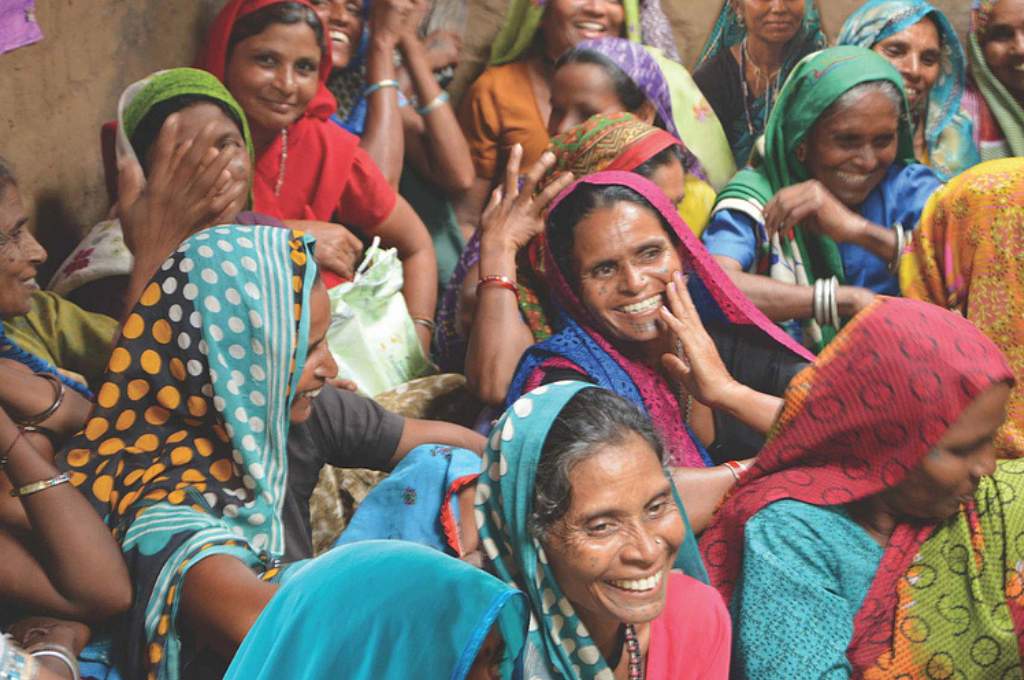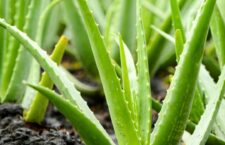Despite its potential as a sustainable empowerment solution, funding for women’s land rights remains scarce. How can funders integrate it into their work?

Social norms have a profound impact on acces s to and control over land in India. | Picture courtesy: EU / CC BY
by
As part of its WLR programme, The Womanity Foundation has been closely working with and funding a number of community-based organisations across rural India that engage with land rights for women. Although many community-based organisations are involved with issues related to the intersection of women and land, funding for such programmes remains scarce. Funds for these interventions are typically drawn from budgets allotted to a larger programme that is not specifically geared towards women’s land rights (WLR).
Our commitment to this cause has helped us realise that there needs to be a more robust funding ecosystem for WLR in India. As a result, we sought to understand the challenges that prevent funders from entering the space. Here’s what we learned:
1. A lack of established models of intervention
The funding ecosystem for WLR has been so vacant that there is a dearth of imitable models and approaches that potential funders can adopt. A lack of structured intervention by nonprofits around WLR has resulted in limited evidence on the positive impact of relevant programmes. By extension, there is limited India-based evidence regarding how work on women and land can/should be funded. Funders thus don’t have the confidence that their funds will be effectively utilised given the contextual heterogeneity of land and communities across the country—resulting in an apprehension towards engaging with WLR.
2. Potential sociopolitical backlash
Social norms have a profound impact on access to and control over land in India. One of the most common land disputes we’ve come across through our work in rural regions involves women (and men) from caste-marginalised communities. This can present unique challenges, as enabling their access to land may draw the ire of those that wield greater power within the community, if such work is perceived to be disrupting the existing social fabric and hierarchy. As a result, there is apprehension among funders about the potential backlash that could be directed at an organisation working on WLR.
3. Perceived complexity
There is a common narrative that interventions on land are ‘complex’ and ‘long drawn’. This, coupled with a lack of gender disaggregated data on women’s land ownership, has resulted in a variety of understandings regarding the extent of the problem and how it plays out on the ground.
The reporting parameters for WLR differ across various databases; states seem to have different mechanisms for recording gender disaggregated data, with some of them not including a gender column in their land records. For example, the fifth National Family Health Survey indicated women’s land ownership to be 22.7 percent, whereas a women’s land rights index constructed by the Center for Land Governance estimated the national average to be 12.9 percent.
Besides failing to convey the extent of the problem, the lack of data also makes funders perceive land as a technically complex issue. Funders view it as a subject that requires extensive knowledge of a variety of laws and thus steer clear from it, instead opting to fund causes they are more familiar with—such as education, health, or livelihoods.
This perception also places rights-based interventions in opposition to the existing system of governance. A number of existing interventions primarily aim to fill gaps in implementation rather than seeking a complete overhaul of the system itself.
Land-related interventions are often also long-term projects. For instance, interventions related to inheritance or agricultural land may not have a significant impact to display in two or three years. This serves as a deterrent for funders who want interventions to bear favourable outcomes within a relatively shorter time frame.
The role that land can play in the progress towards achieving the sustainable development goals cannot be underplayed.
Lastly, the existing ecosystem for work on WLR is fragmented, as a lot of the efforts on the ground are by community-based women’s rights organisations that do not have access to land as a primary focus. They are often pulled into the realm of WLR work when the women they engage with experience land-related issues. The absence of a strong and evolving ecosystem ensures that the capacities of community-based organisations and other stakeholders (such as government functionaries) to provide effective support remains limited.
Having said that, the role that land can play in the progress towards achieving the sustainable development goals (SDGs) cannot be underplayed. Land for women can have a multidimensional impact, serving as an underlying financial asset and a means of generating livelihoods. Ensuring land rights for women contributes towards 13 SDGs under the overarching umbrella of SDG 5: Gender Equality and its intersections with SDG 2: Zero Hunger, SDG 08: Decent Work and Economic Growth, SDG 13: Climate Action, and SDG 17: Partnerships.
Therefore, it becomes imperative for all of us to evaluate the work we are doing from a lens of women’s access to and ownership over land.
How can funders integrate WLR into their work?
1. Get a lay of the land
When we started our work on WLR, it took us six months to make sense of the problem in the Indian context given the diversity of land, the issues related to it, and how it applies to women belonging to different social and cultural contexts. Therefore, we encourage interested funders to take some time to look at what they already fund and gauge whether they can extend the ambit of their programmes to include one or two land-related issues.
This is especially helpful for funders who are already working with rural women, given that the lives and livelihoods of these women are strongly intertwined with land. Similarly, a variety of commonly funded issues—organic farming, nature-based livelihoods, migration, and climate—are linked to land.
The fragmented nature of the existing ecosystem of stakeholders is a genuine problem, as there is minimal communication between the numerous organisations that are working on WLR and funders. This is why we are always happy to get on the phone with anyone interested in learning more about the landscape, as we believe that sharing the knowledge and expertise we have obtained through our experiences in this field can contribute positively.
2. Generate indicators
We understand and accept that there simply aren’t enough evidence-based models that can be emulated. Therefore, the question we ask those who fund related causes such as agriculture, ecological restoration, food security, and housing is, “Can you incorporate the collection of baseline data on women’s land ownership or access or control into any of your existing programmes?”
This data collection doesn’t need to be a part of or a precursor to a larger WLR intervention. For example, if your organisation is working with self-help groups (SHGs) and is having conversations with members about bolstering their livelihoods, you can ask them questions about land ownership as land constitutes a critical element of the assets they may or may not have. The information obtained through these conversations can serve as key indicators that may inspire your organisation and others to undertake more structured interventions on WLR. At the very least, it will contribute to filling the significant gaps in information about the status of women’s land ownership in India.
3. Sidestep backlash
Most land laws in India are gender equitable on paper, but their implementation is often lacking. Designing or engaging in programmes that enable effective implementation are thus not in opposition to governance. Prima facie, nobody should have a problem with this. The opposition that may still emerge as a result of community dynamics is to be expected in the case of any intervention that shifts the status quo.
Funding organisations that have strong community presence in a particular region can also leverage their support. By mapping relevant stakeholders, they can work to identify an effective intervention model that elicits minimal pushback.
Funders could also look at ways to support land-related initiatives that are promoted by state governments. For example, the Odisha government is seeking to complete its implementation of the Forest Rights Act by 2024. This serves as a perfect avenue for funding organisations to step in and provide support, such as training women from tribal communities in the region to help their communities file forest rights claims.
4. Consider an alternate view of land
Historically, access to and control over land has equalled agency and power, and this still holds true. Thus, at The Womanity Foundation, we view land as a pathway to women’s empowerment—both social and economic. If empowering women is a key aim of the initiatives you choose to fund, we recommend looking at land as an avenue to achieve that. In fact, land is the most sustainable pathway to fulfil this aim as it is an asset that grants women financial security, shelter, social status, income, and livelihood opportunities. Therefore, funders aiming for the long-term sustainability of their work on women’s empowerment should strongly consider investing in WLR. It can help ensure that women have more agency, long after a programme or project ends.
A myopic view of land as an asset to be monetised can be a dangerous one.
When we first started funding WLR, we stressed on women’s economic empowerment as our primary goal. But soon we learned that a myopic view of land as an asset to be monetised can be a dangerous one. Through conversations with the women we work with, we realised that the social security accorded by land is often far more important in their eyes, and this is something all funders should keep in mind.
Although the mindset shift required by funders is substantial, the steps they can take could be incremental. Engaging at conferences and events with organisations that work on this issue is also a useful step in deciding whether it’s worth adding to the agenda.
Lastly, there is significant space for innovation in this field. It is conducive for funders looking at innovations relating to climate and alternative funding instruments. Given that a number of outcomes on land and its economics are measurable and verifiable, we believe there is a case for investments in the form of development bonds with stringent evaluation studies. This will not only create credible evidence, but can also potentially open alternate funding options for this resource-crunched issue.
We would thus encourage everyone to take a step back, understand the sustainable impact land can have for women, their families, their communities, as well as the planet.
This article is supported by Womanity Foundation and has been published first by IDR English.
यदि आप हमको सपोर्ट करना चाहते है तो हमारी ग्रामीण नारीवादी स्वतंत्र पत्रकारिता का समर्थन करें और हमारे प्रोडक्ट KL हटके का सब्सक्रिप्शन लें’

